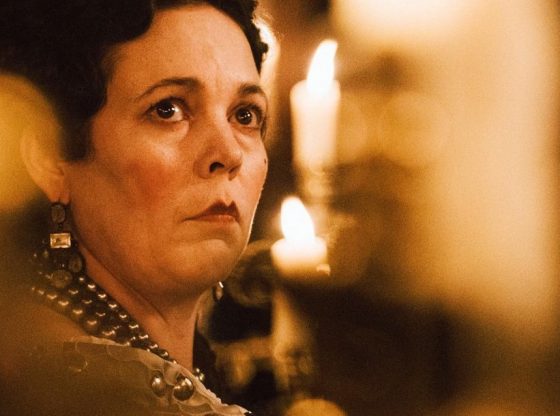What follows, as it did last year, is our version of the Oscars, though we’ve decided to leave the near daily shake-ups and step-backs to our friends at the other Academy. Once again, the following results were determined using a simple preferential balloting system. Votes were cast by the intelligent (and often idiosyncratic) members of the Film and Media and Cultural Studies graduate programs at the University of Wisconsin-Madison, leaving us with a list of winners and nominees that represents what we felt made 2018 another special year at the cinema (or at home watching Netflix). In each category, you will first see a winner, then the runner-ups arranged in order of group preference, and finally a short blurb about the winning film, actor, director, writer, production designer, make-up artist, etc. Our list is, by no means, exhaustive, but I think you will find our cases convincing, our nominees distinctive, and our total package insightful — though feel free to voice any agreements or proposed oversights in the comments below.
And, of course, many thanks go out to our seventeen participants this year: John Bennett, Tim Brayton, Pauline Lampert, Jackie Land, Nick Laureano, Maureen Sullivan Mauk, Jacob Mertens, Dillon Mitchell, Erica Moulton, Will Quade, Olivia Riley, Laura Schumacher, Matt St. John, Anthony Twarog, Tom Welch, Zach Zahos, and, why not, me. It’s always been something of a dream of mine to run a critics’ poll like this one, and I am so very lucky to have you all as my voters. — JJ BERSCH
BEST PICTURE
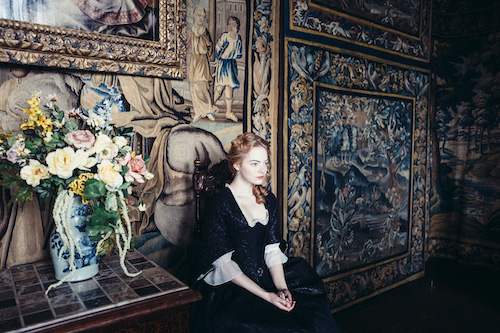
- The Favourite
- If Beale Street Could Talk
- Spider-Man: Into the Spider-Verse
- First Reformed
- Roma
- Widows
- A Star Is Born
- Zama
- Mission: Impossible – Fallout
- Shoplifters
A list of small happenings in The Favourite that also sort of describe the experience of watching The Favourite: submerging your forearm in big bucket of lye on a dreary English morn; an inopportune quack; ignoring the gout because your lust is far too strong; a bright splash of pigeon’s blood across your face; eating blue cake with a side of blue cud; a series of sensual, autumnal tackles; a quick, rough, dry wedding night; a slap to the face followed by a wild wheelchair ride; hiding in the darkness because you were just trying to read your old books but those two had to come in and knock each other around for a bit; a horse-drawn carriage drag straight into purgatory. May we please have more legitimate awards contenders as weird and mean and sad and funny and beautiful as this one.— JJ BERSCH
ACTRESS IN A LEADING ROLE
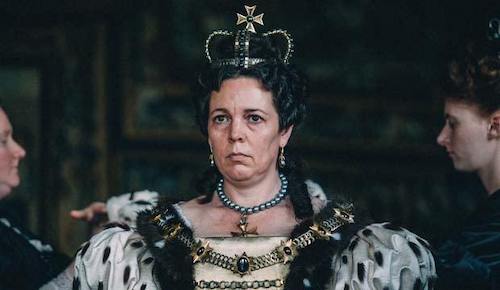
- Olivia Colman, The Favourite
- Lady Gaga, A Star Is Born
- Kiki Layne, If Beale Street Could Talk
- Juliette Binoche, Let the Sunshine In
- Sakura Ando, Shoplifters
We can bicker about who leads The Favourite’s brilliant trifecta of performances, but here’s what I know: this movie would not get off the ground without Olivia Colman. A lesser actress would turn Queen Anne into caricature, the very embodiment of excess; Colman approaches her with both humor and empathy. Each of the women in The Favourite manipulates the other, and no one is spared from the film’s satire. Yet there’s something profoundly sad about watching Colman push away her former companion in exchange for empty gestures, unable to find affection unencumbered by royal privilege. I may not care about the crown, but I cared about her. God save Queen Colman. — JACOB MERTENS
ACTOR IN A LEADING ROLE
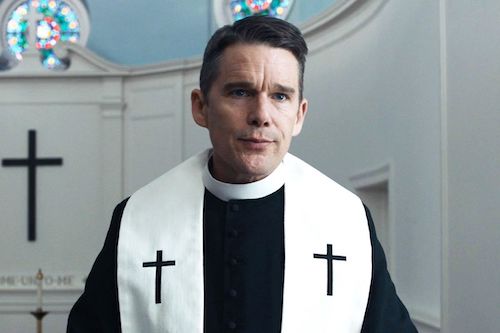
- Ethan Hawke, First Reformed
- Stephan James, If Beale Street Could Talk
- Bradley Cooper, A Star Is Born
- Daniel Giménez Cacho, Zama
- Tom Cruise, Mission: Impossible – Fallout
Quick to lean forward and trash Republicans or else recline with a grin, Ethan Hawke’s star persona has long been one of puckish casualness. That makes his casting as Reverend Toller counterintuitive on paper and his achievement on screen all the more uncanny. His emotional directness and scrappy liberalism remain intact, albeit situated in an alienating, ever-shifting physical performance. Compare how he lords over a plate of sashimi late in the film to his empathetic posture earlier, as he counsels a depressed parishioner with a cup of tea in hand. His voice likewise swings, from imploring schoolchildren to imagine the horrors of slavery in a near-whisper to screaming into his cassock. These changes only hint at Toller’s unfathomable inner spiral, yet Hawke keeps his descent within the realm of disturbing plausibility. — ZACH ZAHOS
ACTRESS IN A SUPPORTING ROLE
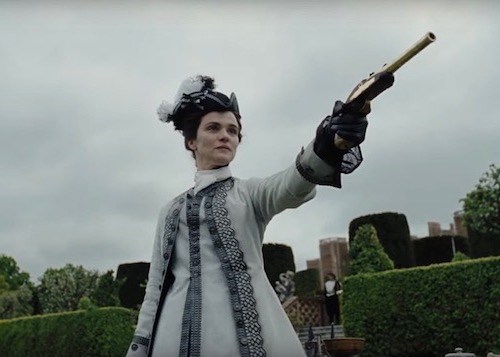
- Rachel Weisz, The Favourite
- Regina King, If Beale Street Could Talk
- Emma Stone, The Favourite
- Elizabeth Debicki, Widows
- Zoe Kazan, The Ballad of Buster Scruggs
Though almost everything about The Favourite is outsized and ostentatious, Rachel Weisz seems determined to deliver a small performance. Weisz wages verbal battle with almost every member of the cast, but she fights on a different register, responding to their cannon volleys with quieter, more precise strikes. Her eyes are her primary weapons. For much of the film she keeps them slightly narrowed, subjecting servants, members of Parliament, and even the Queen to her withering stare. She projects Churchill’s arrogance with her neck and shoulders, too, which she holds taut and back. She may be the calmest member of the Queen’s court, but Weisz’s Churchill is almost never relaxed. She only releases this tension at the end of the film, as she watches soldiers approach her estate. Churchill surely surmises that a grim fate awaits her, but only now does Weisz finally relax. Defeated, her once hard stare turns blank and her shoulders go slack, and as the icy facade falls away we finally see her wounds. Weisz raises her teacup to her mouth as if nothing were out of the ordinary, a final brilliant gesture in the most complete performance of the year. — NICK LAUREANO
ACTOR IN A SUPPORTING ROLE
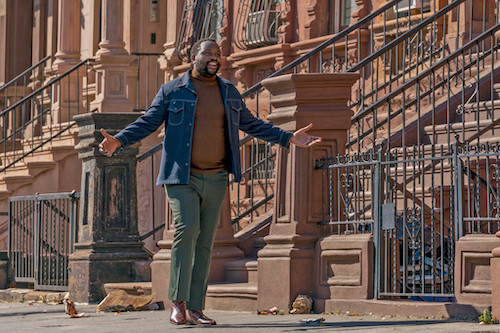
- Brian Tyree Henry, If Beale Street Could Talk
- Nicholas Hoult, The Favourite
- Richard E. Grant, Can You Ever Forgive Me?
- Daniel Kaluuya, Widows
- Colman Domingo, If Beale Street Could Talk
Daniel Carty’s cracking a smile to keep from cracking. For a brief period of time, Carty wrangles If Beale Street Could Talk away from its central plot and forces the story to revolve around him. What initially appears to be an engaging interlude reveals itself to be a microcosm of the larger concerns of the film: the inherent unfairness of America’s largest systems, the coexistence of black joy and black pain, the speed with which you might lose the life you knew. But Carty isn’t merely a thesis statement; played masterfully by Brian Tyree Henry, who appeared in three of our Best Picture nominees and returned as television’s best character last year, Carty is heartbreakingly human. Exaggerated snortles give way to an unbroken stare, every human emotion expressed expertly in a few minutes. Throughout its runtime, director Barry Jenkins’s Moonlight follow-up exquisitely and convincingly blends the personal and the political; for the entirety of Henry’s screen time, it does so flawlessly. — JJ BERSCH
DIRECTING
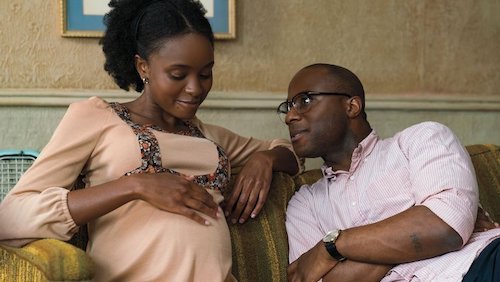
- Barry Jenkins, If Beale Street Could Talk
- Yorgos Lanthimos, The Favourite
- Paul Schrader, First Reformed
- Alfonso Cuarón, Roma
- Steve McQueen, Widows
Barry Jenkins’s follow-up to Moonlight opens with a quote from the James Baldwin novel on which it’s based: “Every black person born in America was born on Beale Street…Beale Street is our legacy. This novel deals with the impossibility and the possibility, the absolute necessity, to give expression to this legacy.” If Beale Street Could Talk has a wider scope than its predecessor Moonlight, and Jenkins has no shortage of techniques to tackle this, whether he’s weaving together still photography with KiKi Layne’s powerful vocal performance or creating the year’s best scene with just Brian Tyree Henry and the distorted sax of Miles Davis’ “Blue in Green.” Still, though, Jenkins’s greatest accomplishment as a director is the powerful emotion he evokes from simply filming his actors looking into the camera. — DILLON MITCHELL
WRITING (ADAPTED SCREENPLAY)
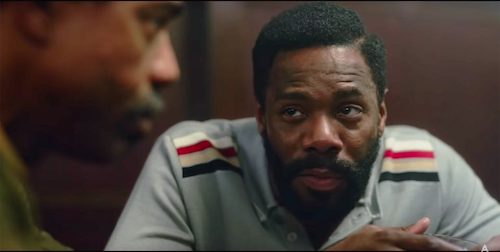
- Barry Jenkins, If Beale Street Could Talk
- Phil Lord and Rodney Rothman, Spider-Man: Into the Spider-Verse
- Nicole Holofcener and Jeff Whitty, Can You Ever Forgive Me?
- Lucrecia Martel, Zama
- Joel and Ethan Coen, The Ballad of Buster Scruggs
It might be difficult to gauge just how integral Barry Jenkins’ script is beneath Beale Street‘s more visibly sumptuous aspects: the lush cinematography, the intimate, hushed performances, and the opulent musical score. But all one has to do is read the final three pages of this screenplay to see how the film’s entire aesthetic is generated within Jenkins’ writing. In fact, as we “slowly, patiently fade to black”—as Jenkins describes it—any reader can see that everything from the political weight to the sensual romantic yearning of the film is rooted in Jenkins’ simultaneously towering and sensitive prose. — WILL QUADE
Writing (Original Screenplay)
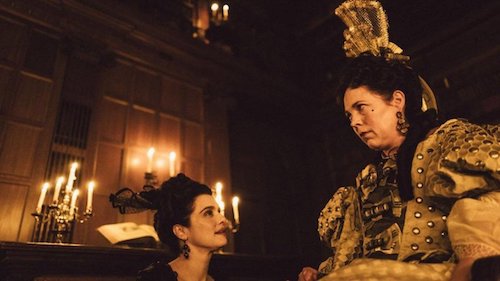
- Deborah Davis and Tony McNamara, The Favourite
- Paul Schrader, First Reformed
- Hirokazu Koreeda, Shoplifters
- Boots Riley, Sorry to Bother You
- Andrew Bujalski, Support the Girls
It’s rare to see a screenplay that focuses on three compelling and complicated women, much less one that has its basis in historical record, yet that’s exactly where Deborah Davis began with her original script in 1998. It’s perhaps no surprise, then, that the film took 20 years to be produced given the script’s subject matter and the fact it has no male lead to speak of. But even as Tony McNamara’s edits and Lanthimos’ directorial choices began to augment the script, the leads remained as sympathetic and nuanced as they deserve. It’s also exceedingly funny, though some of the older crowd I saw it with during a Tuesday matinee may disagree. I certainly wasn’t expecting to hear (or laugh at) as many jokes about non-consensual sex as I did (see this tweet). But the fact that they work is a testament to the script itself. — TOM WELCH
Documentary Feature
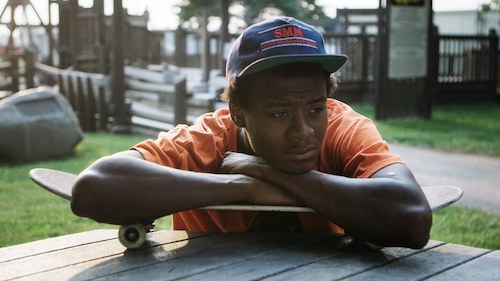
- Minding the Gap
- Shirkers
- Won’t You Be My Neighbor?
- Hale County This Morning, This Evening
- El Mar La Mar
It sometimes seems like every other day we’re greeted with another in-depth profile of Midwestern malaise and Rust Belt rage, but all of them should take note of the way Bing Liu’s striking debut feature Minding the Gap unfolds: rather than beginning filming with an overarching conceptual hook, Liu simply filmed his friends and himself in ways both overwhelmingly stylish (Minding the Gap‘s skateboarding scenes would make Spike Jonze jealous) and unabashedly empathetic (the film is like “free therapy” claims one of its subjects, and he’s entirely correct), allowing the story to come about inductively. Eventually Liu alludes to larger problems in his hometown of Rockford, Illinois, and the country at large, but those claims always feel natural. Minding the Gap is a film of hard-earned intuition; I can’t wait to see where that energy takes Liu next. — JJ BERSCH
Foreign Language Film
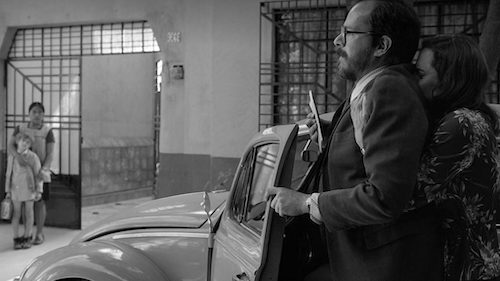
- Roma
- Zama
- Shoplifters
- The Day After
- Let the Sunshine In
Roma is a beautiful paradox: it is an intimate epic. It tells the story of one woman’s life through some of the grandest widescreen images of 2018 (making it a nasty irony that most people will only ever see it streaming through Netflix), taking place on elaborate, fussily detailed sets recreating a whole neighborhood of Mexico City in the 1970s. Explosive politics and history keep peering in at the edges. And yet it always returns to quietude and calm interior spaces, in which Yalitza Aparicio’s Cleo grinds through one indistinguishable day after the next, slowly and steadily asserting herself and her personality throughout the film’s grandiosity. — TIM BRAYTON
Animated Feature Film
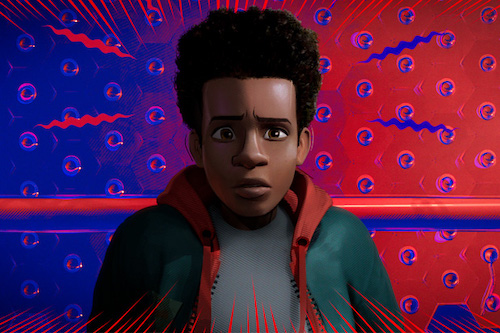
- Spider-Man: Into the Spider-Verse
- Incredibles 2
- Isle of Dogs
- The Night Is Short, Walk on Girl
- Ralph Breaks the Internet
Superhero films have supposedly been on their way out for the last decade; this year, they finally proved they had a good reason to stick around. Spider-Man: Into the Spider-Verse stands out by doubling (or, more accurately, quintupling) down on the origin story that has become ubiquitous in popular film culture and featuring an art style that looks ripped from the pages of a comic book. Its crowning achievement, however, is the voice acting of its ensemble cast, including Jake Johnson delivering one of the year’s best supporting performances as an older Peter Parker that at once embodies the character’s light-hearted humor and deeply felt melancholy. — DILLON MITCHELL
Cinematography
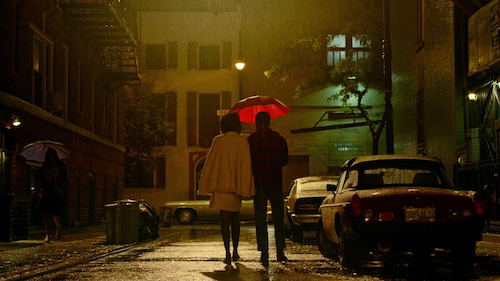
- James Laxton, If Beale Street Could Talk
- Robbie Ryan, The Favourite
- Alfonso Cuarón, Roma
- Linus Sandgren, First Man
- Lukasz Zal, Cold War
Much like a few of the other films on this list, If Beale Street Could Talk is an intimate drama shot like an epic. Captured using the large-format Arri Alexa 65, which might be the most impressive digital camera yet produced, If Beale Street Could Talk looks unbelievably rich, its luscious yellows and greens reflecting radiantly off the beaming skin of its young couple. Cinematographer James Laxton and director Barry Jenkins haven’t entirely moved away from Moonlight‘s intoxicating intermingling of various international art cinema influences, but they’ve added a welcome dash of technicolor Hollywood melodrama; a double feature of this and Todd Haynes’s Far From Heaven will delight many a future rep house audience member. Yet what makes Laxton and Jenkins less an assemblage of antecedents and more the most exciting pair of young American film artists is their steadfast commitment to character. Beautiful as Beale Street‘s cinematography may be, it’s never purely ornamental or ostentatious; whether it’s a sweeping 360º shot of pluming cigarette smoke and abstract sculpture or one of the film’s many head-on medium close-ups, Laxton’s camera always feeds directly into the moods and concerns of the film’s characters. Beale Street‘s cinematography is as gorgeous as it is perceptive. — JJ BERSCH
Film Editing
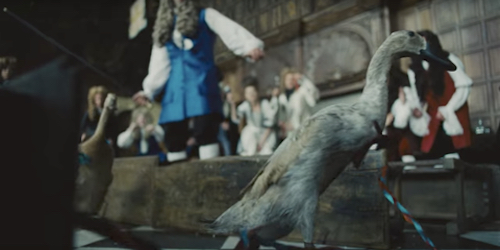
- Yorgos Mavropsaridis, The Favourite
- Eddie Hamilton, Mission: Impossible – Fallout
- Joe Walker, Widows
- Joshua Altman and Bing Liu, Minding the Gap
- Barry Alexander Brown, BlacKkKlansman
Mavropsaridis has worked with his Greek compatriot Yorgos Lanthamos on all of his feature films up to and including Dogtooth, The Lobster, and this year’s Playback best-picture winner The Favourite. Their collaboration stretches beyond feature films to their work in the Greek commercial industry where they honed their unique aesthetic that includes a penchant for fish-eye lenses and a deadly mix of black humor and physical comedy.The Favourite represents some of Mavropsaridis’ finest structural editing to date, including multiple animal motifs that weave their way through the film leading to a gasp-inducing final scene. Perhaps Mavropsaridis’ finest accomplishment with The Favourite is that his edits never favor one character over another (making the distinctions between Stone, Weisz, and Coleman for actress and supporting actress feel especially fraught), but instead present the viewer with three devilishly fine-edged portraits of three deeply flawed and complex women. — ERICA MOULTON
Music (original Score)
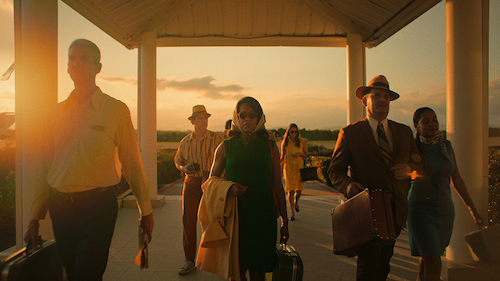
- Nicholas Britell, If Beale Street Could Talk
- Justin Hurwitz, First Man
- Ludwig Göransson, Black Panther
- Geoff Barrow and Ben Salisbury, Annihilation
- Alexandre Desplat, Isle of Dogs
“What does joy sound like?” is reportedly the first question director Barry Jenkins offered to composer Nicholas Britell in preparation for their collaboration on the tragic love story If Beale Street Could Talk; Britell answers it, stunningly, on “Agape.” Joy sounds like a simple, sweet duo of piano presses, a fluttering of trumpets giving way to longing, aching brass, ethereal background strings that become no less heavenly when they crash loudly back into Earth. Joy, as the larger film argues, also sounds a lot like pain—that doesn’t make it any less worthwhile, or necessary, of a venture. What does joy sound like? It sounds like this. — JJ BERSCH
Music (Original Song)
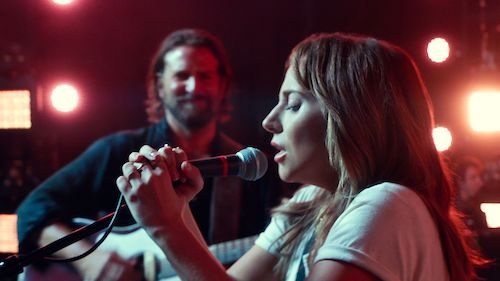
- “Shallow,” A Star Is Born
- “Always Remember Us This Way,” A Star Is Born
- “Opps,” Black Panther
- “Suspirium,” Suspiria
- “All the Stars,” Black Panther
A Star is Born wouldn’t work without its soundtrack. And its soundtrack wouldn’t work without “Shallow.” The song becomes such an incredible shorthand for both Jackson Mane and Ally’s respective styles—a metonymy for the movie itself. It also helps that the song is so listenable that an audience can handle listening to it in God knows how many opening trailers. One only need watch a live performance of the song, like this one from the 2019 Grammy Awards, or this from Gaga’s Vegas residency, to see that “Shallow” is just as much a product of refined acting as it is a product of refined songwriting. It’s still a great song, but IT does not pack the same punch from Cooper-as-Cooper and Gaga-as-Gaga as Cooper-as-Jackson and Gaga-as-Ally. Note the initial hesitance in Ally’s parts of the studio and film version of “Shallow,” which move into a belting confidence. The song’s magic comes from its significance as the near-instant transformation of Ally into a celebrity. This is when and where the star is born. — TOM WELCH
Sound Editing
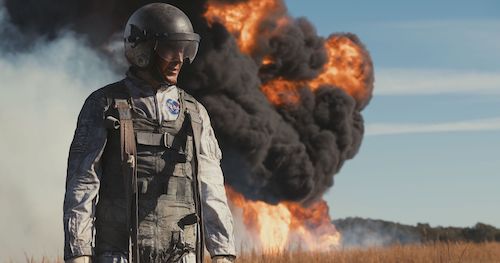
- Ai-Ling Lee and Mildred Iatrou Morgan, First Man
- Geoffrey G. Rubay and Curt Schulkey, Spider-Man: Into the Spider-Verse
- James H. Mather, Misson: Impossible – Fallout
- Paul Cotterell and James Harrison, Widows
- Alan Robert Murray, A Star Is Born
First Man seems poised to capture the sound editing award at the 91st Oscars, a result that would make perfect sense given the complex and often terrifying sound design of the film’s spaceflight sequences. Yet I’m most impressed with the film’s domestic scenes. Ai-Ling Lee and Mildred Iatrou Morgan provide a dense mosaic of everyday sounds that doesn’t just immerse us in the 1960s milieu but also lends an ear onto the characters’ emotions. In combining the clatter of silverware and the squeals of delighted children playing offscreen, the duo makes a dinner party at an astronaut’s home feel warm and familiar. Just a few scenes later, at the reception for the astronaut Elliot See’s funeral, gone are the sounds of children; in their place Lee and Morgan supply the hushed, indistinct chatter of adults who are unsure of what to say but desperate to sound polite. Silverware and china remain, but where before they evoked a carefree communion among friends, they’re now the manifestation of one character’s desire to help her recently widowed friend clear the dishes. The clatter becomes a sad reminder of the futile gestures these people relied on to maintain a sense of order as their world spun out of control. Listening to moments like this, you realize that despite its epic scale and scope, First Man is above all an intimate and impressionistic drama. — NICK LAUREANO
Sound Mixing
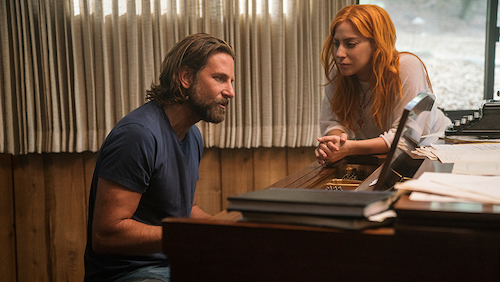
- Tom Ozanich, Dean Zupancic, Jason Ruder, and Steve Morrow, A Star Is Born
- Jon Taylor, Frank A. Montaño, Ai-Ling Lee, and Mary H. Ellis, First Man
- Onnalee Blank, Matthew Waters, and Joe White, If Beale Street Could Talk
- Steve Boeddeker, Brandon Proctor, and Peter Devlin, Black Panther
- Chris Munro, Paul Munro, and Mike Prestwood Smith, Mission: Impossible – Fallout
A Star Is Born opens with a blustery, bleary-eyed, and belligerent bravura performance of “Black Eyes.” The mix is loud, the angles are wide, the lens flares are abundant, and it is very, very clear that Jackson Maine (played achingly by director Bradley Cooper) is out of control. This performance is immediately contrasted with Maine’s exit from the concert venue: a lonesome guitar riff conjoins the two scenes, but the adoring crowd is almost fully muffled by the bulky doors of Maine’s getaway vehicle and his numerous bottles of liquor. Thus establishes the central premise (and prowess) of A Star Is Born‘s powerful sound mix: celebrity, inspiration, and love push and pull, push and pull, push and pull — it ain’t easy to swing so wildly all the time. When the film ends with an entirely different bombastic performance, it’s no surprise that A Star Is Born‘s teariest moment shuffles back to a quieter mix. Maybe music is essentially just twelve notes between any octave, but I sure loved the way they mixed those notes here. — JJ BERSCH
Production Design
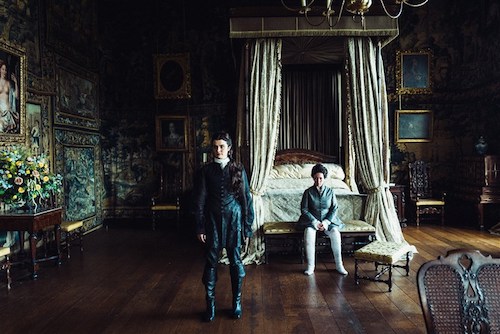
- Fiona Crombie and Alice Felton, The Favourite
- Mark Friedberg and Kris Moran, If Beale Street Could Talk
- Hannah Beachler and Jay Hart, Black Panther
- Jess Gonchor and Nancy Haigh, The Ballad of Buster Scruggs
- Nathan Crowley and Kathy Lucas, First Man
Production design is in some ways a thankless task; every decision made by a production designer must also play nice with the costumes, with the lighting, and with the script. Because the film was shot entirely in natural light, production designer Fiona Crombie had to bring in some 80,000 candles and also make those candles appear natural in the space. It is also an art of its own, which especially in a period piece must communicate an immensity of detail and feeling. It’s one thing to build a duck race, but it’s another to build one that feels both historically accurate and also hilarious. The great thing about The Favourite’s production design, however, is that much like the script, the sets were not beholden to historical reality. As Crombie put it, “Birthday cakes didn’t exist at that time in history, but it’s a much better idea to have a birthday cake than to say, ‘Oh well, they didn’t have them at that time.’” Making a space that feels historical while also playing with that history isn’t an easy task, but it’s one that Crombie delivers on all fronts. — TOM WELCH
Makeup and Hairstyling
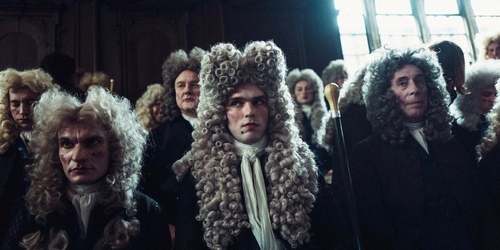
- Nadia Stacey, Tapio Salmi, Beverly Binda, and Hannah Edwards, The Favourite
- Joel Harlow, Jaime Leigh McIntosh, Kimberly Burke, and Tiffony Simpson, Black Panther
- Marisa Amenta and Alberto Moccia, Zama
- Lori McCoy-Bell, Ve Neill, Joy Zapata, and Debbie Zoller, A Star Is Born
- Jenny Shircore, Marc Pilcher and Jessica Brooks, Mary Queen of Scots
A win in this category could be entirely for the wig Nicholas Hoult sports throughout The Favourite, and it would be justified. But the makeup and hairstyling is astounding throughout; it adds to the often comedic, absurdist tone of the film when necessary, but is also dialed back in more serious moments, all while still presenting a cohesive aesthetic. And even more impressively, it not only balances these tones but also conveys something about each character’s vanities, insecurities, and self-image in a single glance. — LAURA SCHUMACHER
Costume Design
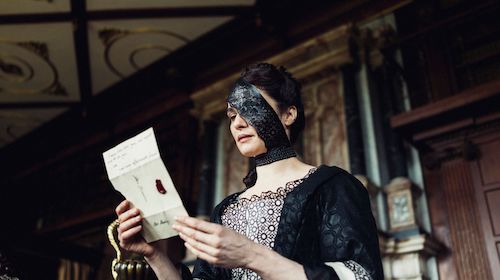
- Sandy Powell, The Favourite
- Ruth Carter, Black Panther
- Caroline Eselin, If Beale Street Could Talk
- Mary Zophres, The Ballad of Buster Scruggs
- Renee Ehrlich Kalfus, A Simple Favor
The costuming for a period piece can often be lavish, eye-catching, and impressively accurate to the time period, but not much more. The Favourite’s costuming is certainly lavish and eye-catching, albeit no slave to historical accuracy, but it also transcends these descriptors. Each piece is beautifully rendered and could stand on its own as a piece of artistry and craft, but each costume also speaks to the wearer and her state of mind (not to mention her place in the court) at that point in the story. And really, how does Rachel Weisz look so cool and intimidating with half her face covered in black lace? — LAURA SCHUMACHER
Visual Effects
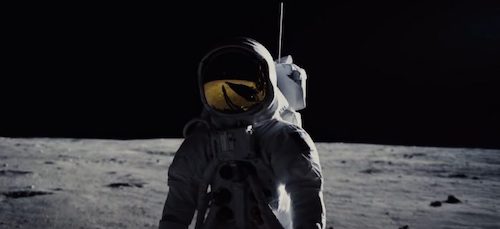
- Paul Lambert, Ian Hunter, Tristan Myles and J.D. Schwalm, First Man
- Roger Guyett, Grady Cofer, Matthew E. Butler and David Shirk, Ready Player One
- Neil Corbould, Richard Schuler, Andrew Cadey, and Huw J. Evans, Mission: Impossible – Fallout
- Hayley J. Williams, Sara Bennett, Richard Clarke, and Simon Hughes, Annihilation
- Brian Cox, Jay Barton, Jim Berney, and Jason Bowers, Aquaman
Biopics have earned a reputation for stale recreations of even the most stunning historical events, but First Man maintains the wonder of the moon landing through a seamless blend of CGI and old-school tricks, using new spins on familiar devices like miniatures and rear projection. In another year of visual effects dominated by monsters, aliens, and superheroes, First Man offers a refreshing reminder of just how convincingly films can recreate spectacular moments from reality. — MATT ST. JOHN

